Is This the Most Confusing Intersection in Southwest Houston? Public Works Has Three Ideas to Redesign It
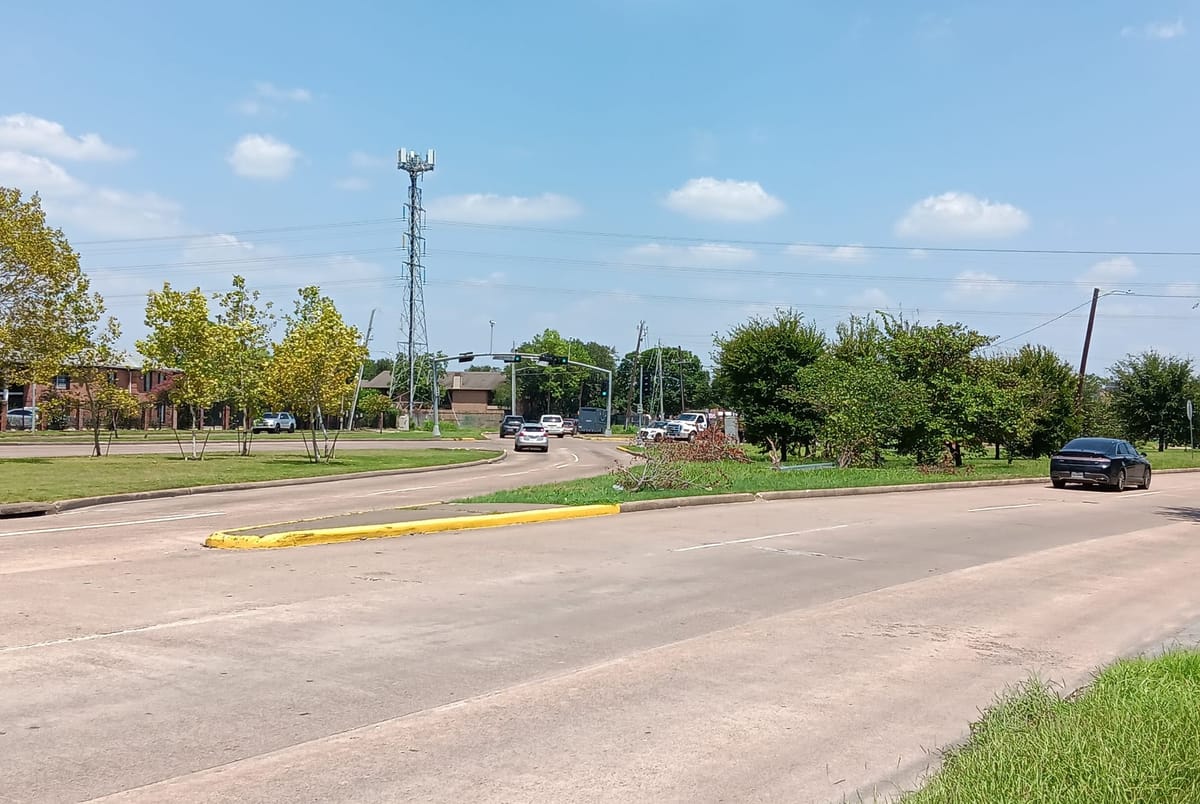
Ever exit 59, drive east on Bissonnet, and suddenly end up on S Braeswood without knowing why?
The intersection of Bissonnet and S Braeswood has a reputation for confusion. The streets run separately on the east side of 59 until they join just before the freeway, becoming one. Drivers who exit 59 and head east see street signs telling them that they're on Bissonnet, but if they travel straight on the three-lane road, they'll end up on S Braeswood without seeing a single sign to warn them.
To stay on Bissonnet, drivers need to peel off to the left, taking what feels like a two-lane off-ramp without an elevation change. As before, no signs name the "off ramp." One can forgive drivers for assuming that the wider, three-lane road is Bissonnet and the two-lane "exit" is an insignificant mystery. It happened to The Sharpener's editor, Tyess Korsmo, the first time he traveled that junction.
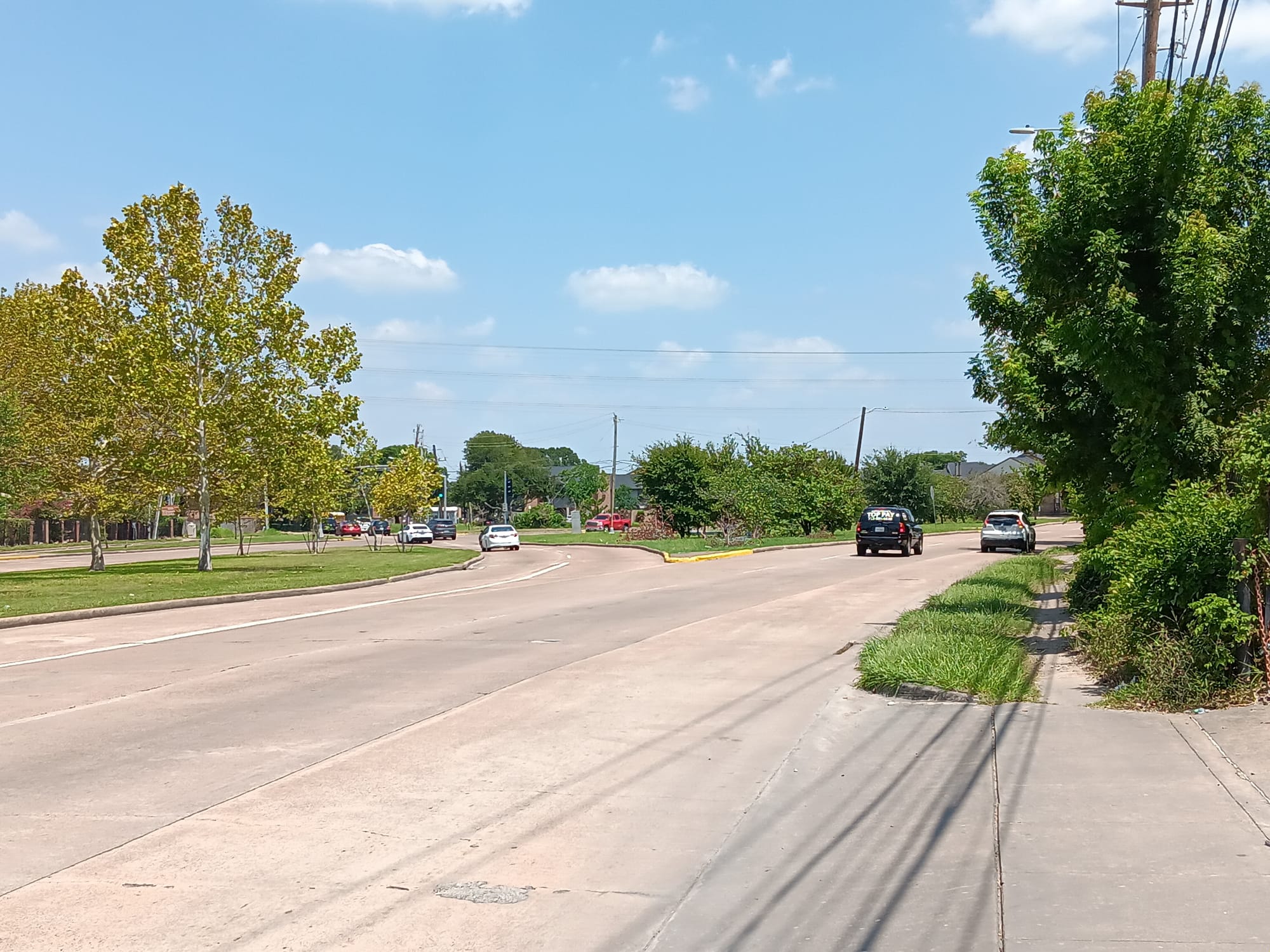
This is not the only confusing or inconvenient thing about the intersection. Westbound drivers heading toward 59 will find that Bissonnet suddenly narrows from two lanes to one—again, without any warning signs—just before merging with S Braeswood. Westbound drivers on Braeswood, on the other hand, are allowed to keep all three of their lanes.
Bissonnet drivers are ordered to merge into the right lane before Braeswood traffic sweeps in from the left, but the lane shift is merely commanded by white paint stripes, not enforced by curb. Bissonnet drivers can easily drive ahead in the left, forbidden lane and careen into the right lane of traffic coming from Braeswood. Just this afternoon, Korsmo witnessed a white pickup with a maroon tailgate ignore the white paint. Fortunately, no vehicles were coming in Braeswood's right lane at the moment.

The intersection also has a one-way lane which is designed for left turns and U-turns, but could be mistaken for a cut-through by drivers coming from smaller Honeywell Rd.
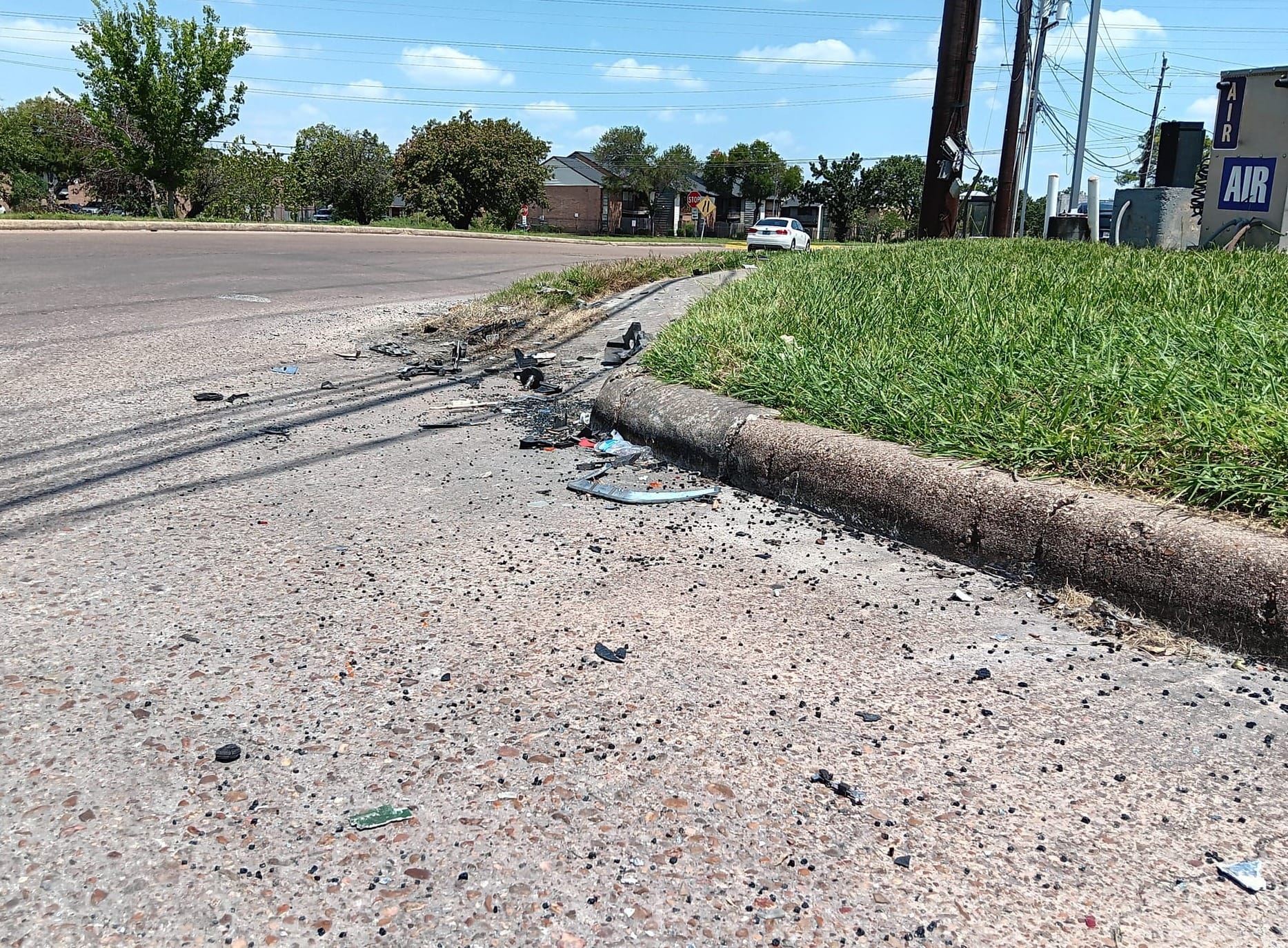
Of course, most Southwest Houstonians who drive on Bissonnet are probably accustomed to the strangeness of the Braeswood intersection. But Southwest Houston is a prime immigration destination, with a constant influx of new drivers. Every time a driver encounters this intersection for the first time, there's arguably a higher-than-average risk of a crash.
Not to mention that the intersection has zero pedestrian crossings, even though it's right next to apartment complexes, METRO bus stops, and a convenience store.
All these factors may contribute to the cluster of crashes—including two KSI (killed-or-serious-injury) accidents—that Houston Public Works counted at this intersection from 2018-2022.
But it would be a stretch to blame it all on the road design. Many Southwest Houston drivers are notorious speeders, and the average traffic speed that HPW clocked through this intersection was 40.5 mph. And sometimes, pedestrians just aren't paying attention. If Korsmo hadn't braked this afternoon, he would have hit a phone-and-earbud-toting man who stepped into Bissonnet without looking, just before the intersection.
But HPW employees claim that by changing the design of this intersection, they can make it safer for drivers, cyclists, and pedestrians. They have three main ideas, and they want feedback from the public.
At a July 17 community meeting at Bayland Park, HPW shared three design plans with community members. One of the plans could be implemented as part of HPW's upcoming $35.9 million Bissonnet Corridor Safe Streets Project. If all three designs are rejected, then HPW plans to stick with the current design, but that appears unlikely.
At the meeting, a man only identified as Dr. Gregory, a consultant working on this project and hailing from civil engineering firm Ardurra, said that HPW is focusing on this intersection because it is “confusing” and has “no proper pedestrian crossing.” He outlined the three design ideas.
The first is to convert it into a T-intersection (see below). The traffic signal would remain, but the intersection would be “simplified” and optimized to increase pedestrian and bicycle safety, according to Gregory. The tradeoff, he said, is that it might inhibit “future growth” and not allow the addition of more lanes in the future. Also, U-turns could be “quite tight.”
The second option, a roundabout, would have no signal (see below). Roundabouts slow traffic, but don’t stop it completely. Gregory said, “All [drivers] would have to do is yield while moving at a slow pace.” The design would provide pedestrians with refuge islands in the median and allow them to cross the intersection more safely. The trick would be making sure all vehicles, including trucks, are able to navigate it properly.
The roundabout raised some concerns at the meeting because it would work on a yield basis. As one audience member at the meeting, a middle-aged man wearing a baseball cap, put it, “That’s a big word—yield. They don’t understand it here in Houston.”
The peanut intersection would be a variation on the roundabout (see below). It poses similar concerns, but one audience member said he liked it. It would maintain some of the infrastructure of the current design while incorporating pedestrian refuge islands. Like the roundabout, it would have no signal
HPW employees also pointed out that the space at the current intersection is underused. Some designs, such as a roundabout or peanut, could include space for a work of public art. Alternatively or additionally, HPW could plant more trees in the intersection's green space.
HPW is requesting feedback from the community on the three design options. According to the project webpage, HPW is accepting comments through August 16. Community members can email their thoughts to engage@houstontx.gov.
Read more about the Bissonnet Corridor Safe Streets Project below:
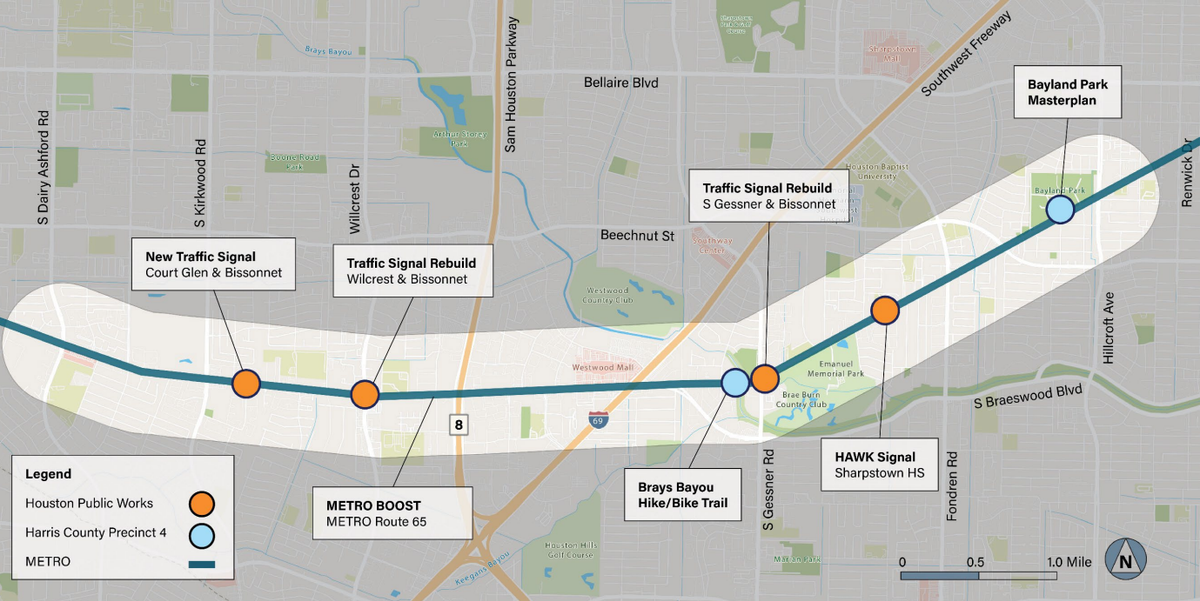
Authors
Tyess Korsmo

Rachel Iliev



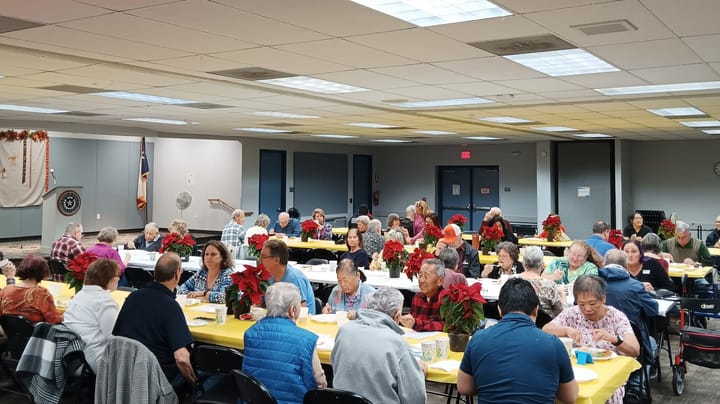
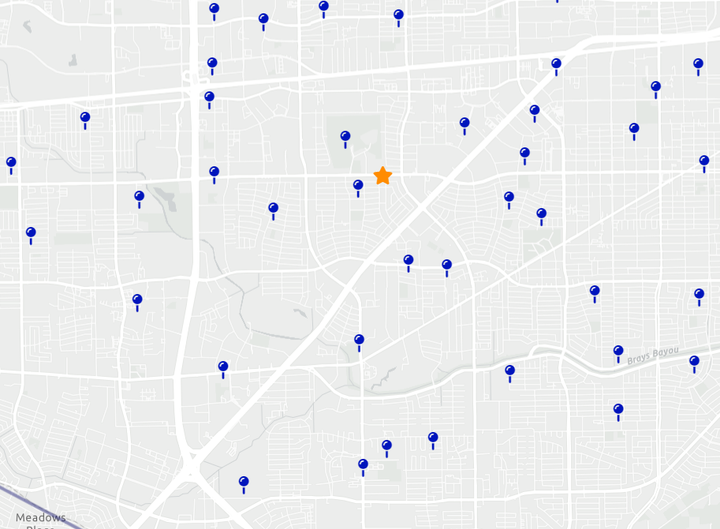
Comments ()